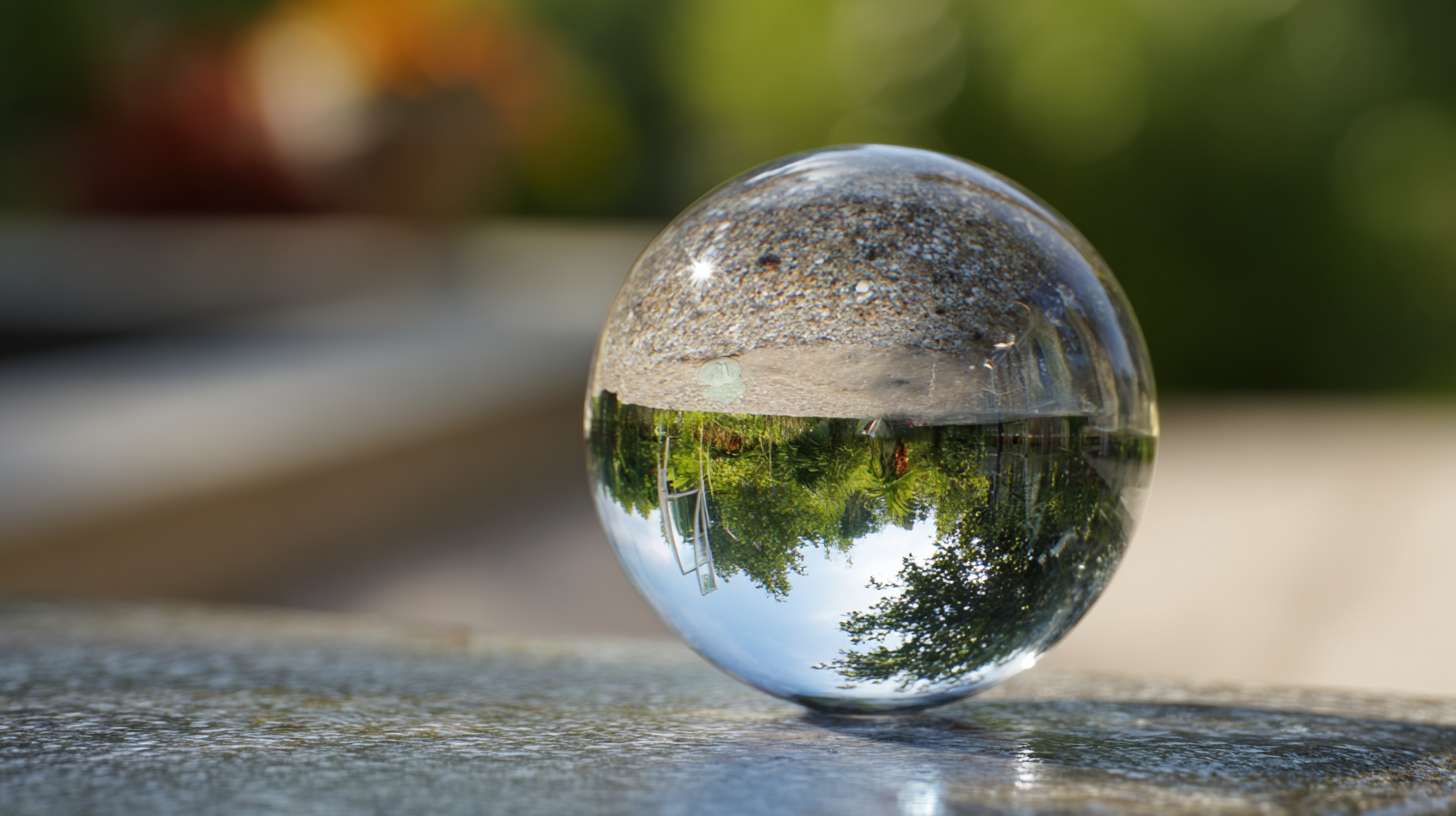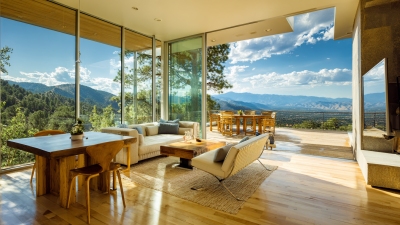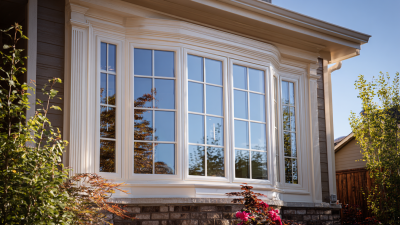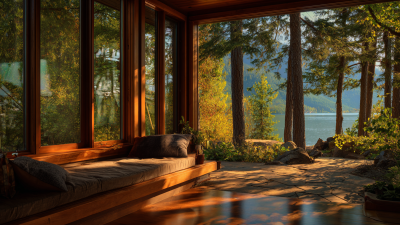Exploring the Benefits of Using Home Glass Solutions for Sustainable Living
In recent years, the shift towards sustainable living has gained significant momentum, with homeowners increasingly seeking eco-friendly solutions to reduce their carbon footprint. One such innovation is the use of home glass solutions, which not only enhance the aesthetic appeal of modern residences but also contribute significantly to energy efficiency. According to the latest report from the U.S. Green Building Council, homes that utilize energy-efficient glazing can decrease heating and cooling costs by up to 30%. Furthermore, building with high-performance glass can help reduce environmental impact, as studies show that glass recycling processes contribute to a 90% reduction in energy consumption compared to producing new glass. This introduction of high-quality, sustainable glass options not only promises substantial economic benefits but also plays a crucial role in fostering a greener future for our planet. As more homeowners embrace these innovative materials, the potential for positive environmental change continues to grow, making home glass solutions a pivotal aspect of sustainable living.

Benefits of Home Glass Solutions in Enhancing Energy Efficiency
 Home glass solutions play a vital role in enhancing energy efficiency, contributing significantly to sustainable living. One of the primary benefits of using advanced glass technologies is their exceptional insulating properties. Double or triple-glazed windows are designed to minimize heat transfer, keeping homes warmer in the winter and cooler in the summer. This reduction in reliance on heating and cooling systems directly lowers energy consumption, leading to decreased utility bills and a smaller carbon footprint.
Home glass solutions play a vital role in enhancing energy efficiency, contributing significantly to sustainable living. One of the primary benefits of using advanced glass technologies is their exceptional insulating properties. Double or triple-glazed windows are designed to minimize heat transfer, keeping homes warmer in the winter and cooler in the summer. This reduction in reliance on heating and cooling systems directly lowers energy consumption, leading to decreased utility bills and a smaller carbon footprint.
In addition to insulation, modern glass solutions can incorporate Low-E (low-emissivity) coatings that reflect infrared light, further enhancing their energy-saving capabilities. These coatings not only maintain indoor temperatures but also reduce the amount of harmful UV rays entering homes, protecting furnishings and promoting a healthier indoor environment. Furthermore, the implementation of energy-efficient windows contributes to increased property value, as increasingly eco-conscious buyers prioritize homes that feature sustainable designs and materials. Thus, adopting home glass solutions is not only a step towards personal financial savings but also a significant contribution towards a greener planet.
Understanding the Role of Insulated Glass in Reducing Carbon Footprint
Insulated glass plays a pivotal role in sustainable living by significantly reducing a building's carbon footprint. By providing superior thermal performance, insulated glass minimizes energy consumption for heating and cooling, leading to decreased reliance on fossil fuels. This energy efficiency not only helps lower utility bills but also contributes to a greener environment. The integration of advanced glazing technologies, such as low-emissivity coatings, further enhances the insulating properties of glass, ensuring that homes remain comfortable while minimizing their ecological impact.
Additionally, innovations in the glass manufacturing process are essential for sustainable development. Recycling glass and employing energy-efficient melting techniques can greatly reduce the carbon emissions associated with production. The use of materials like glass mineral wool insulation can further improve energy performance in buildings. By adopting these solutions, the construction industry can significantly cut embodied and operational carbon, driving progress toward net-zero building designs and a more sustainable future.
The Impact of Natural Light on Mental Health and Well-being
Natural light plays a pivotal role in enhancing mental health and well-being, making it an essential aspect of sustainable living. The incorporation of home glass solutions, such as large windows and skylights, allows for an abundance of sunlight to permeate living spaces. This increased exposure to natural light can significantly uplift mood, reduce feelings of anxiety, and boost overall mental clarity. Studies have shown that environments flooded with daylight encourage productivity and creativity, fostering a positive atmosphere conducive to personal and professional growth.

Furthermore, natural light regulates the body's circadian rhythms, which influence sleep patterns and hormonal balance. When homes are designed to maximize sunlight, residents often experience better sleep quality, leading to improved cognitive function and emotional stability. By integrating home glass solutions into architectural designs, individuals not only create aesthetically pleasing environments but also promote holistic wellness. Ultimately, embracing natural light in sustainable living spaces cultivates a healthier lifestyle and nurtures the mind, allowing for a deeper connection to one’s surroundings and self.
Evaluating the Long-term Cost Savings of Glass Solutions in Home Renovations
In recent years, the construction and renovation industry has increasingly recognized the economic advantages of incorporating glass solutions into home designs. According to a report by the U.S. Green Building Council, buildings designed with high-performance glass can lead to significant energy savings, often reducing annual energy costs by up to 20%. This is primarily due to glass's ability to enhance natural light while providing excellent insulation, reducing reliance on artificial lighting and HVAC systems.
Moreover, the durable nature of glass means lower maintenance costs over time. The National Association of Home Builders states that homeowners can save an average of $500 annually on upkeep when they select glass that is both energy-efficient and easy to clean. Additionally, long-lasting glass solutions can increase property value, with homes featuring modern glass installations reportedly selling for 10-15% more than those with traditional materials. Together, these factors underscore the long-term cost savings and investments that glass solutions represent in sustainable home renovations.
Exploring the Benefits of Using Home Glass Solutions for Sustainable Living - Evaluating the Long-term Cost Savings of Glass Solutions in Home Renovations
| Renovation Type | Initial Cost (USD) | Annual Energy Savings (USD) | Estimated Lifespan (Years) | Total Savings Over Lifespan (USD) |
|---|---|---|---|---|
| Double Glazed Windows | 3,000 | 400 | 25 | 10,000 |
| Glass Insulation Panels | 4,500 | 500 | 20 | 10,000 |
| Glass Doors | 2,000 | 300 | 15 | 4,500 |
| Glass Skylights | 3,500 | 250 | 20 | 5,000 |
| Glass Railings | 1,500 | 100 | 30 | 3,000 |
How to Choose Sustainable Glass Products for Eco-friendly Living
When selecting sustainable glass products for eco-friendly living, it’s essential to consider the lifecycle of the materials. Start by choosing glass that is made from recycled materials, as this significantly reduces the energy consumption associated with manufacturing new glass. Look for products labeled as “post-consumer recycled glass,” which not only minimizes waste but also decreases the demand for raw resources. Brands that prioritize sustainability often showcase clear environmental certifications, providing transparency about their sourcing and production processes.
Additionally, consider the design and functionality of the glass products you choose. Opt for durable and reusable items that can replace single-use alternatives. For instance, invest in glass containers for food storage, which are not only healthier than plastic but also contribute to a reduction in landfill waste. Moreover, selecting locally produced glass products can lower your carbon footprint by minimizing transportation emissions. By being mindful of these factors, you can make informed decisions that align with your commitment to sustainable living.
Related Posts
-

The Ultimate Guide to Choosing the Best Glass Windows for Your Home
-

The Ultimate Guide to Choosing Quality Windows for Your Home Efficiency
-

Unlocking the Power of Windows for Home: A Comprehensive Guide to Optimize Your Everyday Experience
-

Exploring Opportunities for Glass Companies at the 138th China Import and Export Fair in 2025
-

Why Choosing the Right Home Doors Can Transform Your Living Space
-

The Benefits of Choosing Glass Doors for Modern Home Design
- © Copyright
- Andy's Glass & Window Company
- All Rights Reserved
- Blog